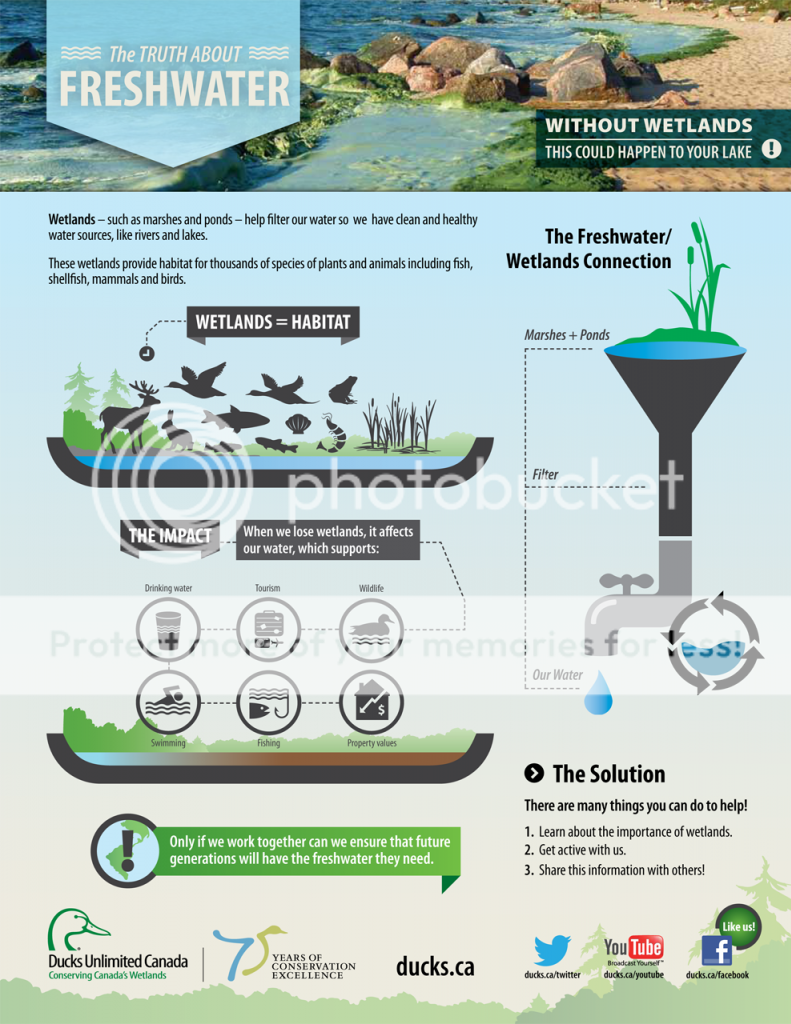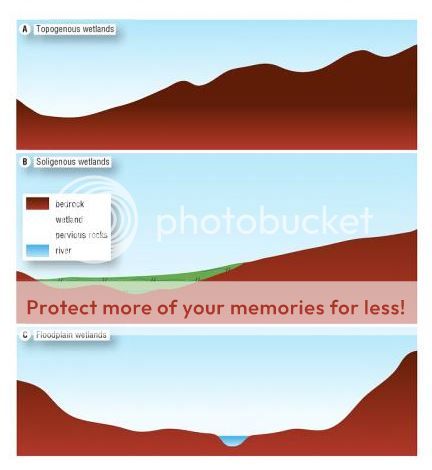
Welcome to the McKell Wascana Conservation Park. This is a 171-acre park space in the city of Regina dedicated to conserving and restoring native prairie and wetland habitat. The Park was developed in partnership with the City of Regina and the Bob McKell family, who graciously donated a part of their land to the conservation of this paticular wetland habitat. The park offers 4 kilometres of groomed nature trails with interpretive stations and benches, a dock for getting close to the creek for pond dipping and an entry plaza and amphitheatre for educational programming. The project was officially dedicated in 2005 by His Royal Highness the Duke of Edinburgh. In 2009, the City of Regina won a municipal Environmental Stewardship Award for the park. We were also awarded the Saskatchewan Watershed Stewardship Award for their work in organizing this project.
Wetland Geology
Geology plays a critical role in understanding wetland dynamics. Wetlands are places that are regularly saturated with water, causing the growth of plants that are specifically adapted to living in wet conditions and the development of characteristic soil features. Wetlands are important because they create products and perform vital functions for man. Our richest modern soils originally formed in wetlands that were drained for farming. Valuable resources such as coal and peat are mined from the deposits of ancient and existing wetlands. Existing wetlands perform many economically and ecologically important functions, such as storing floodwaters, removing sediment and chemicals from surface water, replenishing groundwater, maintaining low flows in streams, and providing wildlife habitat.
The McKell Wascana Conervation Park wetland functions as a seasonal container that catches runoff from melting snow and spring rain, and perhaps more importantly, catches stormwater. Stormwater is the water runoff from rain storms that falls on impervious surfaces such as roads and parking lots. As it runs off these hard surfaces it picks up pollutants like pet waste, vehicle fluids, and sediment from erosion. Because wetlands provide this holding place for water, they slow the flow to the major bodies of water, which also tends to decrease erosion, and this slowing allows the water to drop the sediment it carries when it moves. Stormwater then flows through a series of natural filters of trees, plants, rocks, and soils that absorb the stormwater's nutrients and pollution. Through this process of filtration, clean water trickles down to the ground water and flows into larger bodies of water.

Wetland systems possess biofilters, hydrophytes, and organisms that have the capacity to remove toxic substances that have come from pesticides, industrial discharges, and mining activities. The up-take occurs through most parts of the plant including the stems, roots, and leaves. Floating plants can absorb and filter heavy metals. Water hyacinth), Duckweed, and Water Ferm store iron and copper commonly found in wastewater. Many fast-growing plants rooted in the soils of wetlands such as Reeds and Cattails aid in the role of heavy metal up-take. Animals such as the oyster can filter more than 200 litres of water per day while grazing for food, which removes nutrients, suspended sediments, and chemical contaminants in the process.
Wetland Landscapes

The first type of wetlands are common in hollows and low spots in the landscape where the water is allowed to accumulate. This type of a wetland is called topogenous, meaning the shape and form of the land determine where the wetland forms. This is the most common type of wetland, especially in areas that do not have excessive precipitation.
The second type is called a soligenous wetland. This type of wetland also lies in the hollows of the landscape, but the rocks below the surface stop the water from penetrating. This causes the water to move sideways over the rock into springs. The springs put the water into the wetland in the hollows, which causes the water to change its chemistry due to the make-up of the rocks.
The third type is called a floodplain wetland and is landscape dependent. Low parts of valleys tend to allow the water to collect in the flat sides near the water source. During heavy rains and snow melts, the floodwater overflows from the stream or river and travels across the wide flat plains. This enriches the soil and allows for ideal agricultural development.
Soil and Water Chemistry
Carbon is the major nutrient cycled within wetlands. Most nutrients, such as sulfur, phosphorus, carbon, and nitrogen are found within the soil of wetlands. Anaerobic and aerobic respiration in the soil influences the nutrient cycling of carbon, hydrogen, oxygen, and nitrogen, and the solubility of phosphorus thus contributing to the chemical variations in its water. With the recent emphasis on green house gases, namely Carbon, it is important to note the role that wetlands play in its capturing and storing carbon (As seen in the below image from Ducks Unlimited).


Apart from filtration purposes, wetlands also have a great impact on nutrient retention. Wetlands cycle both sediments and nutrients, which balance terrestrial and aquatic ecosystems. A natural function of wetland vegetation is the up-take and storage of nutrients found in the surrounding soil and water. These nutrients are retained in the system until the plant dies or is harvested by animals or humans. Sadly, it is for this reason that most of Saskatchewan, and the world's, wetland are being destroyed. These area are some of the most nutrient rich areas on the Saskatchewan Prairies, and as such, are fantastic for agriculture. In fact, the McKell Wascana Conservation Park is situated on a plot of land that was once a farm.
The park is located at 12001 Wascana Circle; Feel free to park at the side of the road. The park is only open from 6 am till 11 pm due to Regina Bylaws. Dogs are welcome but must be on leash at all times and must be cleaned up after. You may go off path, but due to nesting birds inm the area, I recommended that you stay on paths if at all possible. To register this find, you need to answers the following questions. Do not post your answers with your log . . . please email them to me directly:
1. Using the information learned above, what type of Wetland landscape is featured at the McKell Wascana Conservation Park?
2. Go to the coordinates N 50 24.764 W 104 32.514 (About 400 m hike). From this location, you will get a great view of Wascana Creek that flows through this area. What type of stream do you see ? Why is this type of stream critical to the formation of these wetlands?
3. The McKell Wascana Conservation Park pride themselves in having native Saskatchewan plants. How do these plants aid in the Wetlands geological stability? (Will require Park exploration to find answer)
4. The McKell Wascana Wetlands are considered to be the last unaltered section of Wascana Creek. What changes have been made to the other areas of the creek, and what is the negative consequences? (Will require Park exploration to find answer)
5. (Optional) Pick a place at the Wetlands that you find interesting and snap a picture of yourself/party. Bonus points go to those that post photos with the old McKell farm water pump that was once used to pump water for the McKell horses.
Please note that this is an Earthcache, which means there is not a physical cache at ground zero. For more information on Earch caches, please visit www.geocaching.com or www.earthcache.org. For more information about wetlands and their conservation, please visit www.Ducksunlimited.ca
Sources:
http://www.ducks.ca/learn-about-wetlands/what-wetland/
http://en.wikipedia.org/wiki/Wetland
http://en.wikipedia.org/wiki/Drainage_basin
Tiner, Ralph W.. Wetland Indicators: A guide to Wetland Identification, Delineation, Classification, and Mapping. CRC Press LLC, 1999.